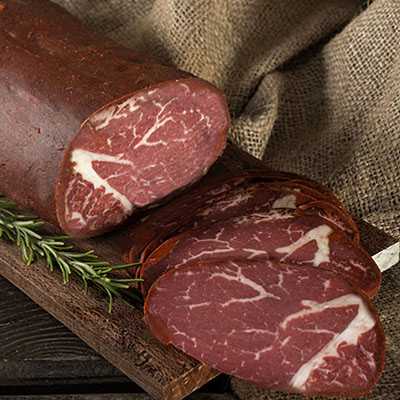History of Linguine with Clams
The linguine with clams recipe has its roots deeply anchored in the culinary traditions of Italy, particularly the coastal regions where seafood is abundant and deeply revered. This dish, a harmonious melding of pasta and seafood, offers a taste of the Italian coastline in every bite. Linguine, which translates to "little tongues" in Italian, pairs seamlessly with clams, providing a canvas that absorbs the rich, briny, and garlic-infused sauce that has become synonymous with this dish.
The history of linguine with clam sauce can be traced back to the traditional kitchens of the Amalfi Coast. As with many Italian recipes, the beauty of the dish lies in its simplicity. It's about the quality of the ingredients and the respect with which they are treated. The use of fresh clams, quality olive oil, a dash of wine, and al dente linguine makes it a timeless dish. It's an example of how Italy has mastered the art of creating flavorsome meals with just a few, well-chosen ingredients.
While the traditional linguine and clams recipe primarily focuses on the white clam sauce, many regions have added their own twist. Some love adding a hint of tomato to the sauce, giving it a blush hue and slightly tangy undertone. This dish has traveled the globe, with many cultures embracing and adapting it to their local flavors. Nevertheless, the classic clam linguine recipe, with its aromatic garlic and fresh parsley, remains a beloved staple in Italian households and is now celebrated worldwide.What sides go with linguine and clams?
What Sides Go With Linguine And Clams?
Linguine and clams is a rich, flavorful dish that can be paired with various sides to complement its taste and texture. Here are some sides that go wonderfully with linguine and clams:
Garlic Bread or Bruschetta: The crispness of the bread contrasts with the pasta, and its garlic flavor complements the clams. Bruschetta, with its fresh tomatoes and basil, adds a refreshing touch.
Green Salad: A light salad with a lemon vinaigrette or Italian dressing can be a refreshing counterpoint to the richness of the clam sauce.
Roasted Vegetables: Vegetables such as asparagus, bell peppers, or zucchini, roasted with olive oil, salt, and pepper, provide a light and flavorful side.
Tomato Salad: Fresh tomatoes, basil, and mozzarella or feta cheese dressed with olive oil and balsamic vinegar offer a tangy and fresh accompaniment.
Roasted Brussel Sprouts: The caramelized exterior and soft interior of roasted Brussel sprouts can be a delightful addition.
Antipasto Platter: A selection of olives, marinated artichokes, and pepperoncini can provide a tangy counterpoint to the dish.
Remember, the key is to balance out the richness and strong flavors of the linguine and clams with sides that are lighter and refreshing or offer a contrasting texture.
Do You Use The Liquid In Canned Clams?
Yes, the liquid in canned clams, often referred to as clam juice or clam broth, is commonly used in recipes to enhance the clam flavor. Especially when preparing dishes like linguine with clams, the clam juice can be used in the sauce to add depth and a more robust seafood taste.
Here's how to use the liquid in canned clams:
- Drain the Clams: Use a strainer to separate the clams from their juice. Keep both.
- For Sauces: When making a sauce for pasta, such as linguine with clams, the clam juice can be added alongside wine, garlic, and other seasonings. As the sauce simmers, the flavors meld together, resulting in a rich, flavorful sauce.
- For Soups: Clam juice is also beneficial when making chowders or seafood soups. It acts as a flavorful base.
- Reduction: If you find the clam juice too thin or want a stronger flavor, you can simmer it on the stove until reduced to your desired consistency and taste.
- Storage: If you're not using the clam juice immediately, store it in the refrigerator and use within a day or two. For longer storage, consider freezing it in ice cube trays for easy portioning later.
However, keep in mind that clam juice can be quite salty. Depending on the brand and type of canned clams, you might want to adjust the salt in your recipe accordingly. Always taste and season incrementally.
What Is The Best White Wine For Linguine And Clams?
When making linguine with clams, the choice of white wine can play a crucial role in the flavor profile of the dish. You'll want a wine that complements the delicate taste of the clams and balances the garlic and other seasonings. Typically, Italian white wines are a popular choice for this classic dish due to their crisp acidity and complementary flavor profiles. Here are some of the best white wines to consider:
1. Pinot Grigio: This Italian white wine is crisp, light, and has hints of citrus and green apple. Its high acidity makes it an excellent choice to cut through the richness of the pasta and enhance the flavor of the clams.
2. Vernaccia di San Gimignano: This is a lesser-known Italian white wine but works wonderfully with seafood dishes. It's dry, crisp, and slightly mineral, making it an excellent match for linguine with clams.
3. Vermentino: Another Italian white, Vermentino has citrusy notes with a touch of almond and a slightly bitter finish. This wine is known for its minerality and pairs well with many seafood dishes, especially linguine with clams.
4. Sauvignon Blanc: While not Italian, this wine's pronounced acidity and citrus notes make it a good match. Opt for a version from a cooler climate, like New Zealand or the Loire Valley in France, for a crisper taste.
5. Albariño: This Spanish white wine has a zesty acidity with flavors of lemon, green apple, and sometimes a slight salinity. Its bright and fresh profile complements the clams wonderfully.
6. Fiano: Originating from the Campania region of Italy, Fiano has hints of honey, spices, and nuts, making it a richer choice. However, its underlying minerality makes it a good fit for the dish.
When cooking with wine, always choose a bottle you'd enjoy drinking. The cooking process will intensify the flavors of the wine, so it's crucial to select a good quality one. Also, remember to serve the same wine (or one of a similar profile) with the meal, as this will ensure a harmonious flavor experience.
Are All Canned Clams Cooked?
Yes, virtually all canned clams you purchase from the store are pre-cooked. The canning process involves cooking the clams inside the sealed can, which not only cooks the clams but also sterilizes the contents, making them safe for long-term storage. When you open a can of clams, they are ready to eat straight from the can, although most people prefer to use them as an ingredient in dishes rather than consuming them directly from the can.
However, when incorporating canned clams into recipes, it's essential to consider that they are already cooked. If they are cooked for an extended period, they may become tough or overcooked. That's why, in many recipes, such as linguine with clams, the canned clams are added towards the end of the cooking process to heat them through without overcooking them.
If you have a recipe that calls for fresh clams and you are using canned ones as a substitute, adjust the cooking time accordingly to avoid overcooking.











































